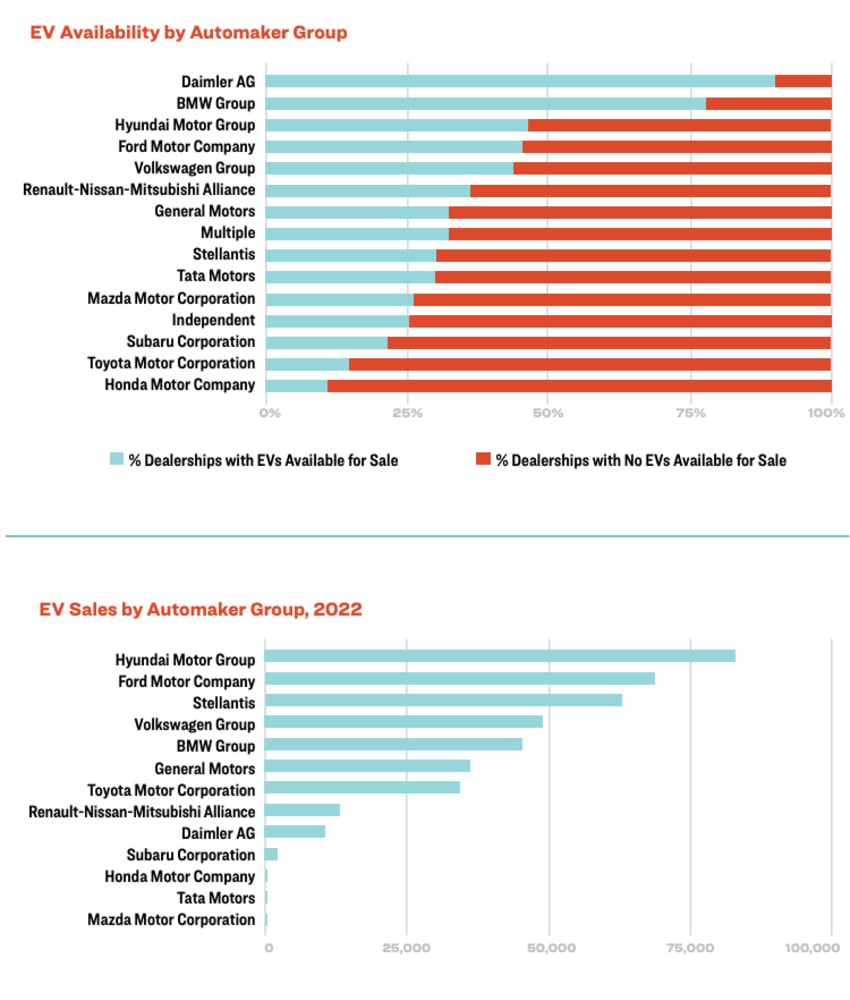A big reason more Americans aren't buying EVs: Two-thirds of dealers don't have any

For the past few years, the august environmental group The Sierra Club has produced an annual report that tracks the progress of electric car adoption in the U.S. This year’s “Rev Up” report is out, and it paints an interesting picture of why more Americans haven’t made the switch yet. Turns out it’s not just range anxiety.
Sierra Club staff and volunteers contacted 800 dealerships nationwide. The dealers in the study represented 18 car brands. (Tesla was not included, for the obvious reason that EVs are all it sells.) The survey asked dealers two questions: Did they have an EV in stock? And if not, would they be interested in selling EVs if they could get their hands on some?
The answers highlighted this fundamental piece of supply and demand: If you want to sell a product, you need to have it in stock. And 66% of car dealers surveyed didn’t have an EV on their lot to sell. That’s more than 500 dealerships with bupkus.
Within that set of 66% of dealers, almost half of them (44%) would really like to have had an EV to sell. Customers have had to order vehicles and waited months to receive them.
No surprise: The main reason for the marketplace scarcity is the well-documented supply chain problem that has hindered production.
But here’s the surprise finding: An equal number of dealers who didn’t have an EV on the lot didn’t want one — they said they would “not offer an EV for sale regardless of automaker allocation and supply chain constraints,” the survey reported. Many said they’d get around to it someday, or were put off by the need to install charging stations or get their technicians EV-certified.
That’s a number that constitutes 30% of the total car dealerships surveyed. Now, a dealership generally makes most of its money in the service department, so a reluctance to sell a product that needs much less service is understandable. Still, it’s a head-scratcher. These dealers may not have noticed where $1.2 trillion is being spent by the companies that make their products. Writing, wall.
But supply-chain restraints are not the only reason EVs are hard to find. The region with the most scarcity is the West Coast — California, Oregon and Washington — simply because consumers are hot for EVs there. Dealers are moving electric cars as fast as they can lay hands on them. When the Sierra Club rang them up, only 27% of dealers in those states could say they had an EV sitting on the lot.
More EV sales findings:
The West Coast states constituted 45% of all electric car sales nationwide.
90% of Mercedes-Benz dealers said they had EVs or PHEVs in stock. Mercedes has five battery electric models on the market with more in the pipeline.
Only 11% of Honda dealers, and just 15% of Toyota dealers, had EVs or PHEVs. Both brands have been notably playing catch-up.
The report had suggestions for how to get more EVs to customers, with one big one for automakers: Build more.
For more insights into the state of EV adoption, check out the Sierra Club’s full report.




